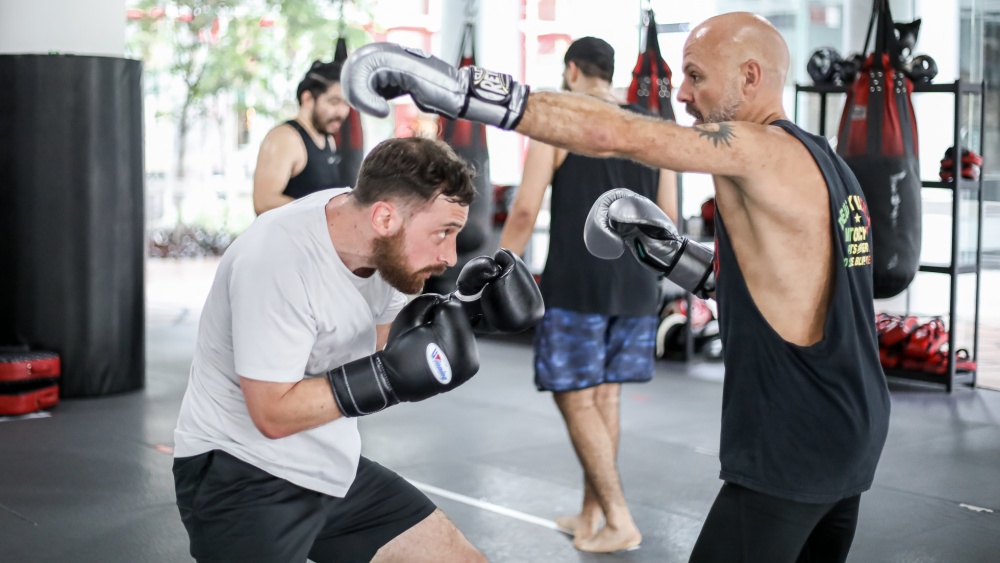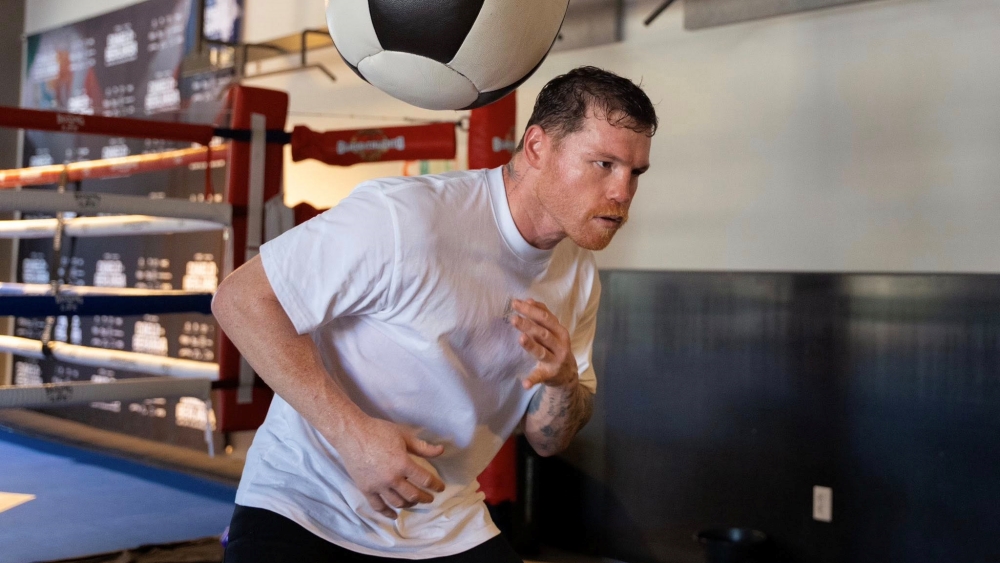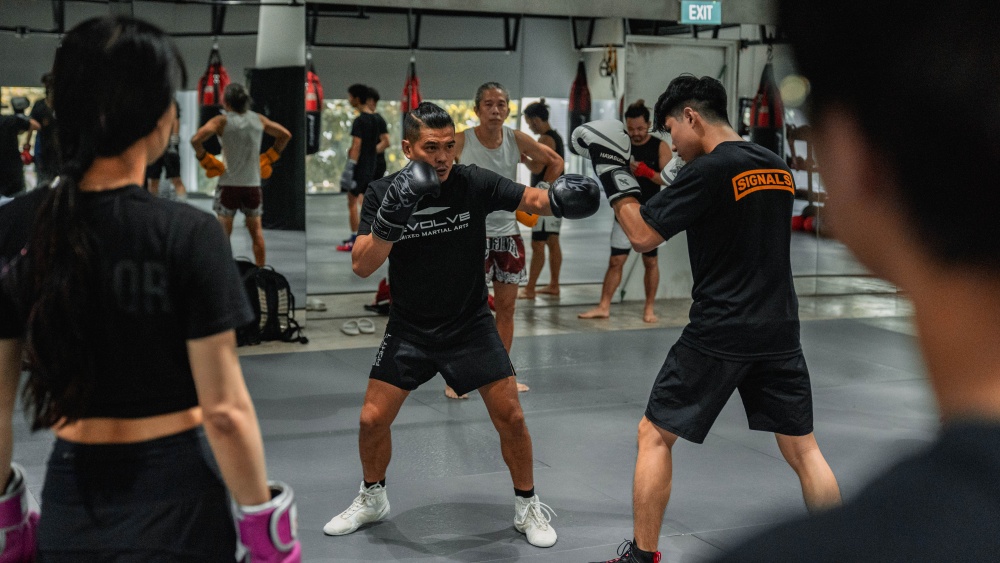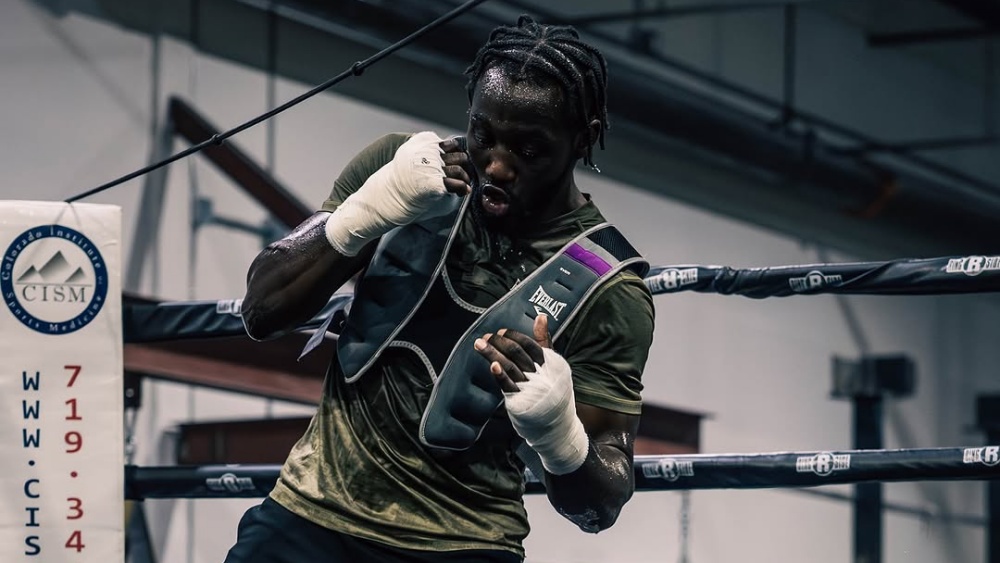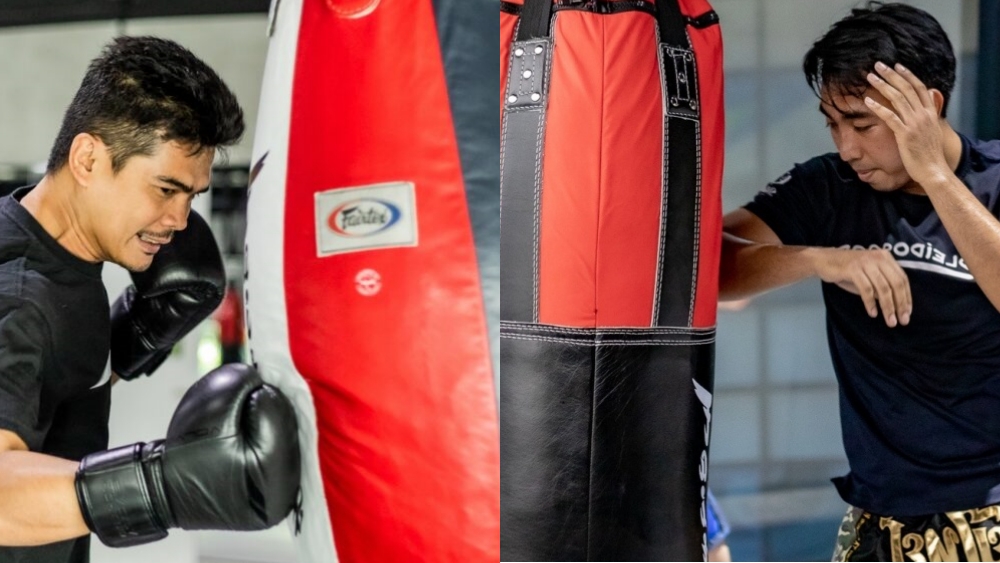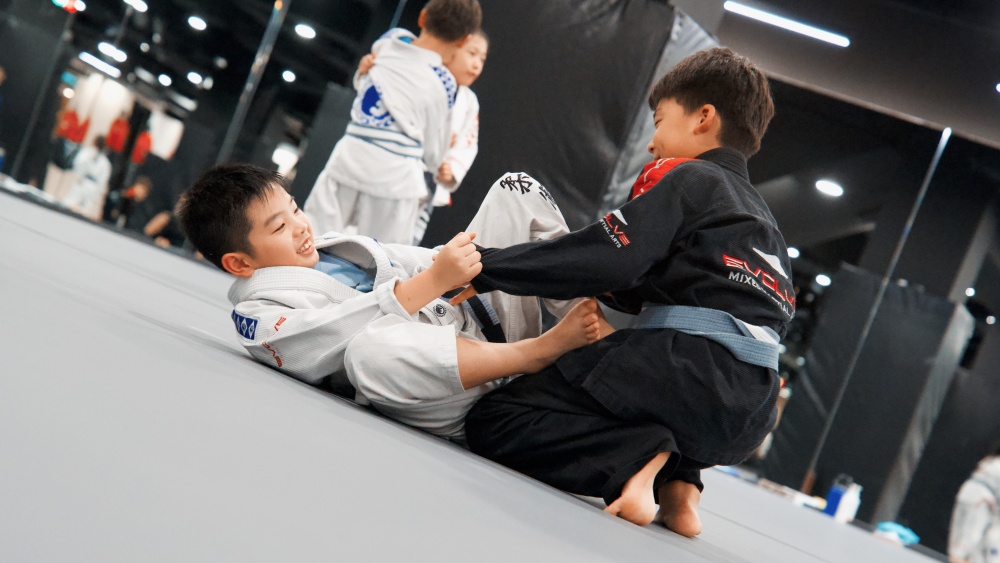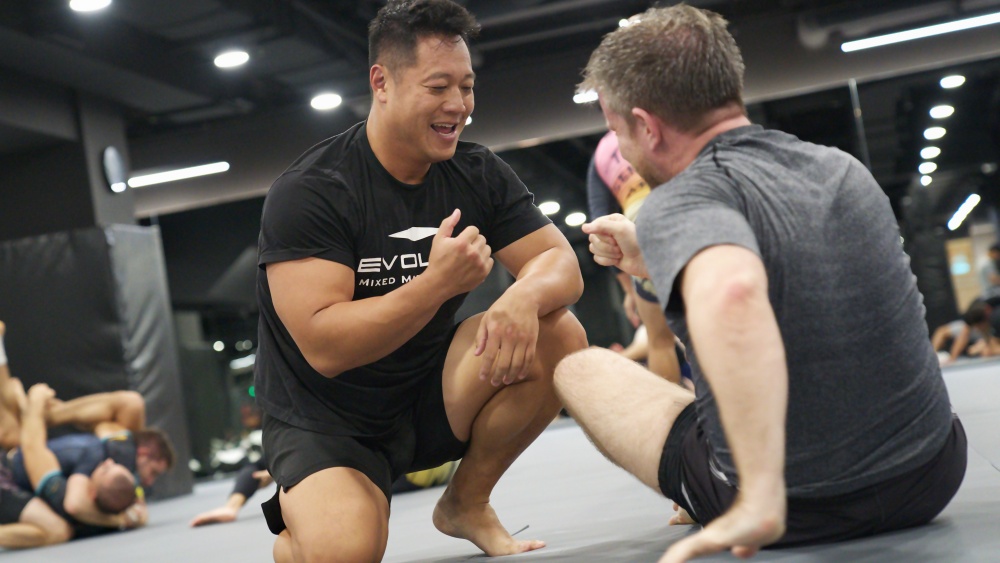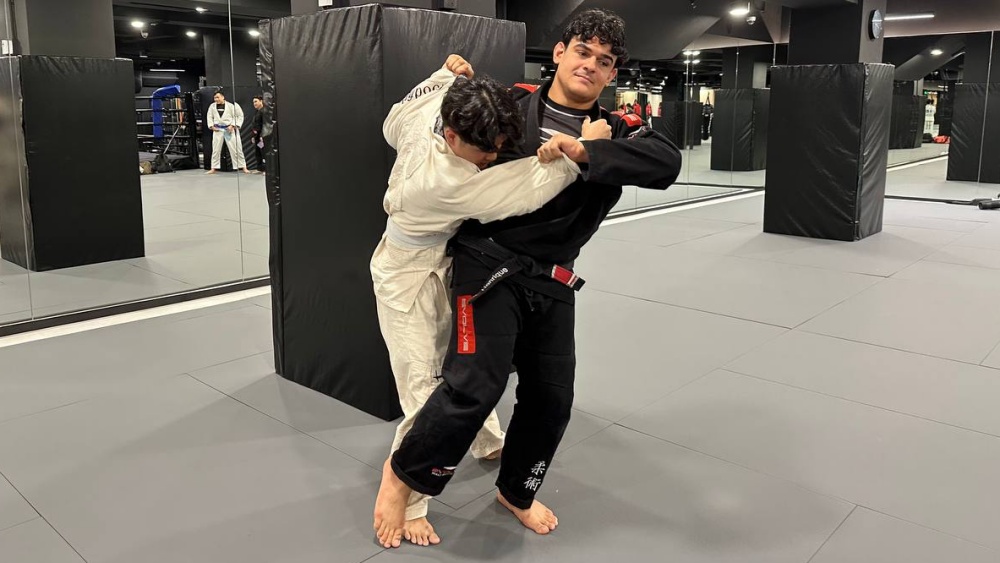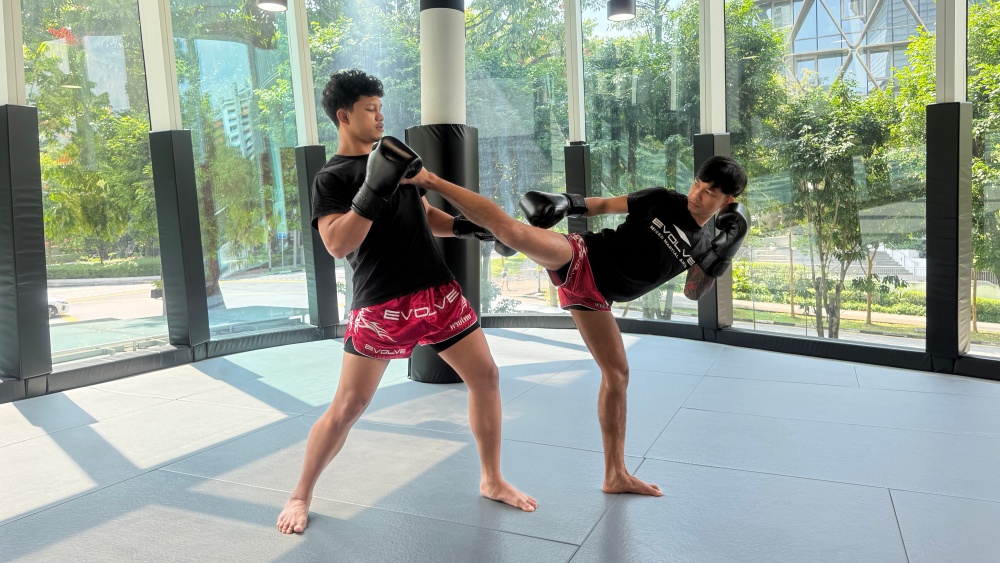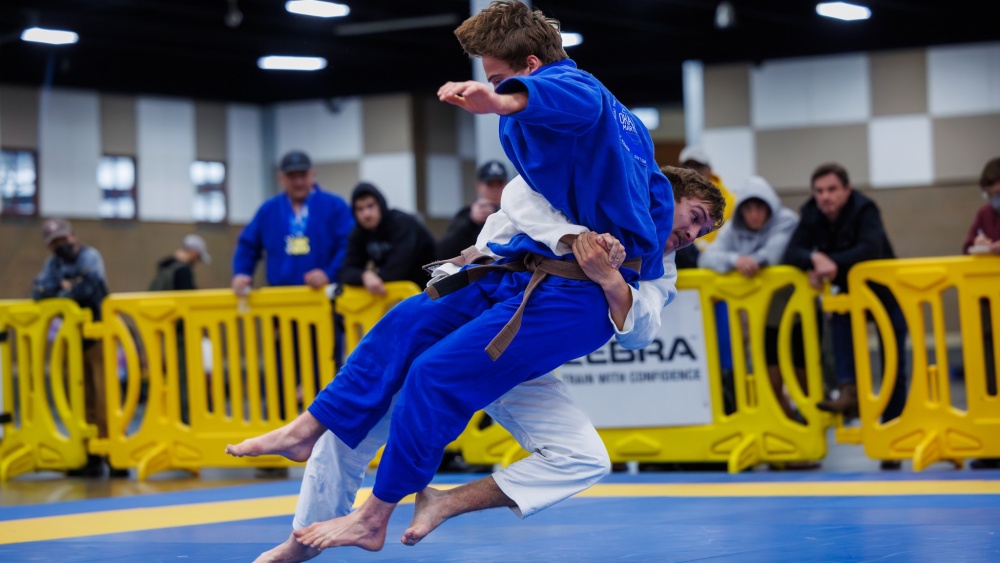The lead hook can be a double-edged sword. Land perfectly, and your opponent’s night might be over. Throw it half-heartedly and you might fight yourself eating a hard right that puts you to sleep.
The lead hook covers more distance than any other type of powerful punch, making it one of the most favored weapons in Boxing and Kickboxing. This article will provide a step-by-step breakdown of the lead hook so you can make it work for you.
Mastering The Lead Hook
The two cornerstones of throwing the perfect lead hook are your foot positioning and footwork. Your mechanics must be excellent for this lead-hand attack to land with optimal power.
1) Foot Positioning: Build Power From The Ground Up
Your feet are your base for power generation, so it’s vital that they’re correctly positioned. Poor foot position prevents you from fully turning into the punch. Some things you should keep in mind when working on your stance include:
- Maintain A Solid Base: Keep your feet shoulder-width apart, your knees slightly bent, and your weight evenly distributed. This keeps you stable while allowing you to pivot your lead leg into the punch.
- Pivot On Your Lead Foot: Rotate inward on the balls of your lead foot as you throw the punch. This little detail allows you to generate power from the ground up.
- Keep Your Rear Foot Planted: Your rear foot stays in place to help keep you balanced and prevent overextending. You’re reaching too far if you have to pick your rear foot off the ground.
- Stay On The Balls Of Your Feet: This will keep you light on your feet, making it easier for you to follow up or step back after landing.
2) Hip Rotation: Where The Power Comes From
Your feet aren’t the only part of your body that helps you generate more power for your strikes; your hips also help to generate power that’s transferred into your punches through your core. Some things to work on when practicing how to turn your hips into lead hooks include:
- Engage Your Core: Your core transfers energy generated by your feet and hips into your punches, so tighten it when throwing to help it do its job.
- Rotate Your Hips Explosively: Twist your hips inward as you pivot on your lead foot to transfer energy from your feet into your hips and then your punches. Align your body as you rotate to generate additional power for your punches. Your lead foot, hips, shoulders, and fist should move together in one fluid motion. Practice relentlessly until you master this.
3) Throwing The Lead Hook: Mechanics Matter
Now that we’ve gone over the vital role your lead foot and hips play when throwing a lead hook, let’s break down the technique’s mechanics:
- Start In A Relaxed Stance: Don’t tighten up right before throwing the punch since that telegraphs your intent and reduces the power the strike lands with.
- Lift Your Lead Elbow: To optimize power, the elbow on your lead arm should be on the same level as your fist.
- Keep Your Fists Tight: Keep your fist tight when throwing the punch and look to make contact with your two biggest knuckles.
- Turn Into The Hook: Drive your fist toward the target as you rotate your body into the punch in an explosive movement.
- Retract: Your lead side is vulnerable when your arm is extended, so bring it back to your guard as quickly as possible after throwing the punch. An experienced opponent will look to use the opportunity to land counters.
The key to developing an excellent lead hook is to keep everything tight. You want your fist to travel the shortest distance possible to reach the target. This reduces the opportunities your opponents have to launch counters or evade the punch.
Common Mistakes To Avoid
Some of the bad habits you should avoid falling into when throwing a lead hook include:
- Overcommitting: Avoid swinging widely at opponents when throwing lead hooks. Remember what we said about keeping things tight? Overcommitting leaves you vulnerable to counters and can also leave you off-balanced, limiting your defensive options. Watch Conor McGregor’s title match against Jose Aldo to see how dire the consequences of overcommitting on a lead hook can be.
- Dropping Your Rear Hand: This is the only hand you have to protect your face with when you throw a lead hook, so keep it close to your face where it can be useful.
- Forgetting To Reestablish Your Guard: Don’t just stand there admiring your work after throwing a lead hook. Bring your lead arm right back to your guard and be ready to use all your defensive tools to evade anything thrown at you.
Setups: Making Your Lead Hook Land
Fighters like ONE Championship former Bantamweight MMA World Champion John “Hands of Stone” Lineker have no problem knocking out opponents with solitary left hooks, but the technique is most effective when set up with other strikes. Some of the ways to set up a lead hook include:
- Jab To Lead Hook: This combination is much more challenging than it looks at first glance. It involves throwing a jab, typically not at full speed, to make your opponent bring their guard to the front, leaving the side of their head open for the hook you plan to throw next.
- Slip And Counter: Slip toward your lead hand when an opponent throws a right hand and counter with a left hook. The goal is to catch them before their right hand returns to their guard.
- Feint And Fire: Fake throwing a jab to draw your opponent’s guard to the front and fire a lead hook at the side of their head.
- Lead Hook To The Body To Lead Hook: This combination is usually set up by mainly throwing head punches to get opponents thinking high. You then surprise them with a hook to the body, preferably targeting the liver, which makes them bring their guard down, opening their head for a lead hook.
Turn Your Lead Hook Into A Knockout Weapon
The lead hook is a valuable tool to have in your fighting arsenal. It’s one of the safest power strikes you can throw when done correctly, but it lands with enough force to bring any contest to an end. It also covers more distance than all your other power weapons, like your uppercuts and rear hook. Remember to drill and shadowbox until you master the basic technique before moving on to pad work and more advanced heavy bag drills.
You may also like:


